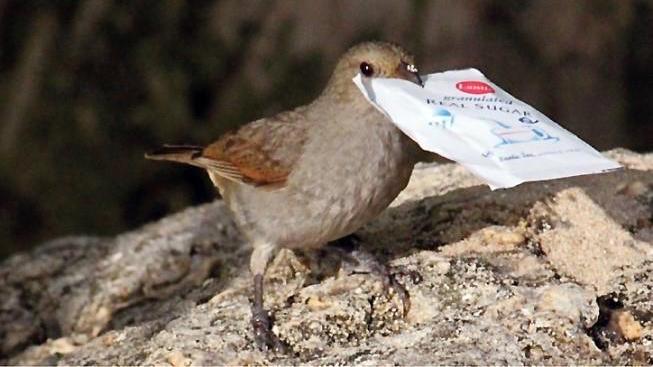It turns out being bird-brained is nothing to be ashamed of. In fact, new research from McGill University in Montreal indicates that bird intelligence might not be all that different from human intelligence. Human brains and bird brains, it seems, solve problems using the same molecular machinery.
The research, led by Jean-Nicolas Audet and Louis Lefebvre, was published last month in Science Advances.
The Montreal-based researchers studied two different bird species commonly found in Barbados, the bullfinch and black-faced grassquit. The two species are similar in all aspects except for one: when it comes to finding food, the bullfinches tend to be more innovative – they’re smarter.
“If you go to a park in Barbados, both of them will be there,” says Audet, “however, the bullfinches will be on the picnic tables trying to steal your lunch, whereas the grassquits will be on the ground, a little more distant from humans, picking seeds in the grass.”
Audet and his colleagues captured the wild birds and brought them back to their laboratory to give them a battery of problem-solving tests. The bullfinches were star students while the grassquits struggled and failed to accomplish the tasks.
Genes-eye view
Next, the researchers compared gene expression in several different brain regions of each bird. Audet wondered which genes were being expressed differently between the species and where in the brain these differences could be found.
The researchers hoped that, since these species are so similar, the genes that are expressed differently between the two species might be controlling the one thing that is different – their intelligence. Specifically, Audet hypothesized that the genes controlling intelligence in these birds might be the same ones linked to problem-solving and intelligence in mammals.
“It was a bit of a far-fetched hypothesis because birds are so different from humans,” says Audet.
Audet explained that since birds have a vastly different brain structure and organization compared to humans, it wouldn’t have been surprising to learn they evolved to use entirely different proteins or receptors to achieve their cognitive skills.
“Their brain architecture is extremely different.” says Audet, “Birds don’t have a cortex, their brain is arranged in nuclei instead of layers.”
Despite these differences, Audet’s hypothesis was correct. The bullfinch intelligence was linked to the high expression of a set of neurotransmitter receptors – the same receptors that have been shown to enhance learning in mammals.
Maybe we’re all a little bird-brained
Excitingly, the difference in expression of these receptors between the smart and not-so-smart birds was most pronounced in the nuclei thought to be analogous to the human prefrontal cortex – the brain region that controls complex decision making in humans.
The receptors that were expressed differently between the species all play a role in neuronal plasticity – a process where the brain remodels neural connections, either making entirely new connections, or strengthening or weakening existing ones. Interestingly, this process has been strongly linked to learning in mammals.
The smarter birds expressed higher levels of the glutamate receptors GRIN1, GRIN2B and GRIN3, that enhance neuronal plasticity, while the dimmer birds expressed higher levels of glutamate receptors GRIN2A, GRM2, GRM3, and GRM4 that diminish neuronal plasticity. Audet and his colleagues speculate that the differential regulation of neuronal plasticity likely underlies these species differences in innovation.
Critically, since the mammalian version of these receptors have been similarly linked to learning and memory, Audet and his colleagues propose that we could use innovative bird species as a model for the evolution of human learning and intelligence.
Audet, now at Rockefeller University in New York City, plans to continue investigating the role of these glutamate receptors in bird behaviour. In addition to confirming these results using a larger number of bird species, he plans to investigate the contribution of these receptors to vocal learning in birds, explaining that changes in the ratio of these receptors within the brain regions responsible for song-learning roughly correspond to vocal learning periods in juvenile birds.
It’s a small leap from birdsong to language. How much more might you have in common with the birds outside your window?








































